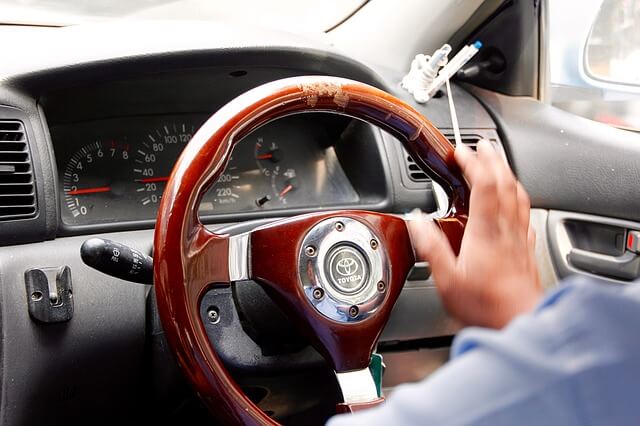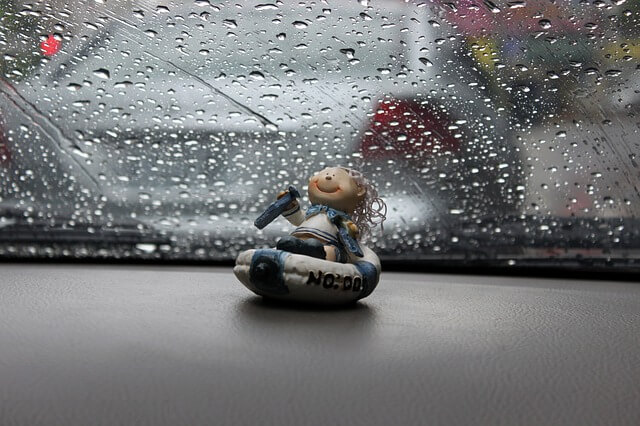Having a job that requires long hours on the road is more than just a sacrifice of your precious free time. Sitting behind the wheel for extended periods of time also comes with physical and mental health downfalls, and the problems often get worse with time.

This guide is for anyone who faces long vehicle rides as part of their job or their lifestyle, whether it’s as a travelling businessperson, a trucker, or simply someone who endures a long commute to the office every day. We will discuss ways you can eat healthy while on the road, how to maintain physical health, and battle the bodily pain and stress that come with long car rides.
Not only that, we’ll give you some great tips for staying alert … while keeping your sanity! Driving-centric jobs may not be ideal for everyone, but they don’t have to dominate your health!
One critical way to maintain a healthy diet on the road — or in any circumstance — is to drink plenty of water. It’s important to keep a bottle handy for you to constantly sip; if you wait until you feel thirsty, you’re already dehydrated. You’ll want to pace yourself so you don’t have to make pit stops every hour, but keeping yourself hydrated will flush toxins from your body, help avoid travel lag, and even curb junk food cravings.
Pack healthy snacks to avoid skipping meals or resorting to fast food stops. Nutritious, non-perishable snacks you can keep in the car include dried fruit (raisins, dates, dried apricots), nuts (walnuts, almonds, cashews), seeds (sunflower seeds, pumpkin seeds, hemp seeds), crackers, and granola. If you’re coming straight from home and can pack fresher snacks, hard-boiled eggs, raw vegies, and sandwiches with hummus or nut butter are all healthy (not to mention portable) options. Fruits and vegetables are especially good to bring; they’re rich in vitamins and minerals and are good for your digestion. If you have access to a blender or food processer, throwing some fresh fruit and vegetables in and making a green smoothie is a great way to get these essential foods into your system without fumbling through a piece of Tupperware!
Protein is also an on-the-road must. High-quality, lean protein enhances concentration, stabilises your blood sugar to prevent energy lag, and helps build muscle. Plus it leaves you feeling fuller so you feel more satisfied. Low sodium jerky, trail mix, and roasted chickpeas are all portable high-protein snacks.

It’s tempting to keep your energy up with stimulants like coffee and energy drinks when the road is stretched out endlessly before you, but it’s better to avoid them. They’ll give your body an artificial boost of energy and alertness but only temporarily. A crash comes soon after, leaving you feeling drained and sometimes bringing headaches and even more lethargy.
If caffeine is a regular part of your diet, cutting back is tough but not impossible. Start by eating more in general; eating smaller meals more frequently can help smooth out your blood glucose, which is essential to keeping up your energy. By switching from two or three meals a day to four or five, you can avoid the huge spikes and resulting crashes in energy brought on by eating fewer larger meals. Eating fruit in particular can be a great way to boost your energy in a healthy way: it takes less time to digest than denser foods and can be processed in about a half hour, allowing it to quickly pass through your system and give your blood glucose a boost.
The first step in fighting the aches and pains associated with extended driving is doing what you can to prevent problems in the first place. Adjust your seat so you aren’t reaching too far for the steering wheel, and make slight adjustments to the seat position if travelling for a particularly long period of time. It can be bad for your spine to stay in one position for too long, so adjust the seat slightly anytime you make a pit stop. The best angle for the seat back is at about a 100-degree angle, sitting slightly back from a fully-upright position. Keep your seat adjustments in this range for the best comfort and support.
You’ll also want to be conscious of your posture and adjust it to prevent slouching, leaning, or hunching. Place your hands at the three and nine o’clock positions on the steering wheel with your elbows resting comfortably on armrests. Keep your head supported with the headrest touching at about eye-level. If your car seat offers lumbar support, adjust it to fill the space at your lower back. Otherwise, you can use a small pillow to fill the gap and maintain the correct shape from tailbone to neck. Cruise control is also a helpful way to take pressure off your back by allowing you to rest your feet on the floor.
Keeping a clear view while you’re driving is not only safe, it can help prevent neck pain. Adjust your mirrors to give yourself the widest possible field of vision so you don’t have to constantly move your head around to see properly. Make sure your windscreen is kept clean and your eyesight isn’t giving you trouble to avoid craning your neck forward and putting pressure on the muscles.

It’s more difficult for your blood to circulate properly when sitting for long periods of time, so try a couple exercises while driving to keep things moving:
Despite your best efforts, you may still encounter muscle pain from your limited daily movement. There are stretches you can perform at home, in a hotel, or even right next to your car. Tightness in the neck is especially painful because it can travel to your shoulders and even your head and jaw, causing more tension and pain. Try these neck exercises to reduce the strain. For shoulder pain, try these exercises. For back pain, check out these stretches. For leg pain, try these exercises.
An often overlooked struggle of extended time on the road is the mental toll it can take. It can be lonely being cooped up in the car alone all day, not to mention intensely boring. There’s also the matter of fatigue; a driver who’s been awake for 17 hours faces the same risk of crashing as someone with a blood alcohol level of 0.05. It’s important to find ways to keep yourself alert without taking your focus off driving.
There are a few simple ways to break the monotony:
There are also a few good habits to get yourself into if you travel a lot:

Follow a regular routine. You may not be able to predict traffic or road conditions, but you can keep a consistent schedule around it. Include extra time for unforeseen weather and accidents so you won’t panic if you fall behind schedule.
It’s important to keep an eye on your health when your job requires a lot of time behind the wheel. Keep these tips in mind for happier travels!
Don’t stall now. See if you can track down better car insurance cover
Compare car insurance